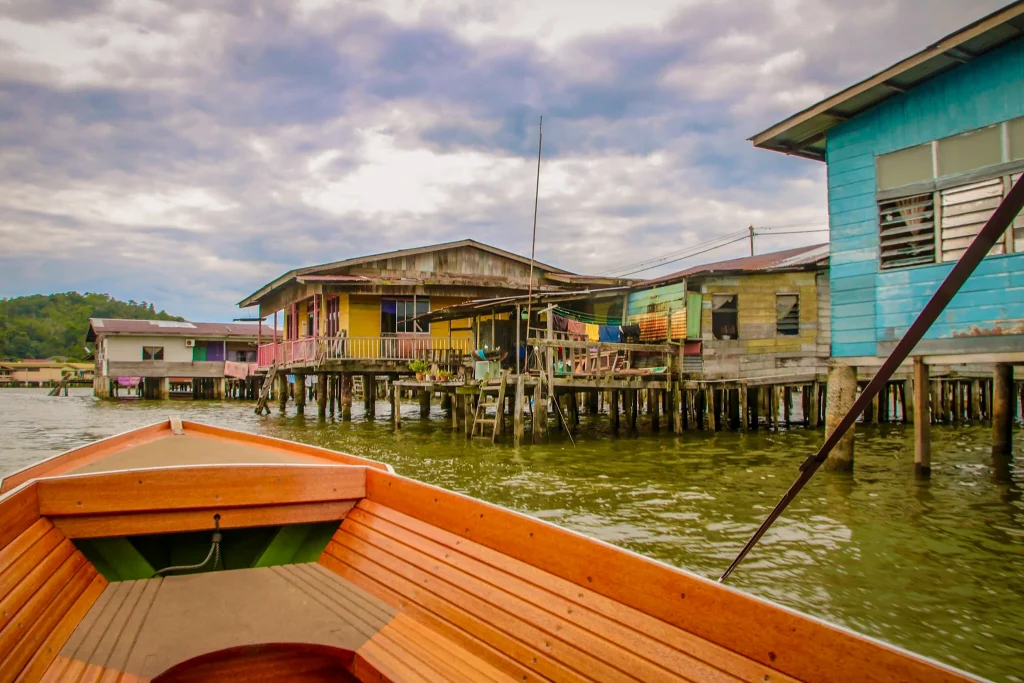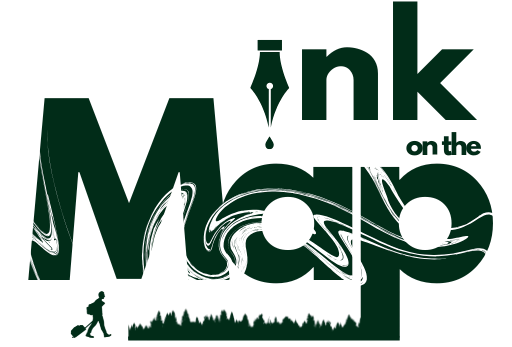Kampong Ayer Floating Village

The past few days in Brunei, I’ve just been poking around the outskirts, not hitting the center yet. The idea was to rally everyone for a group outing, but the international students here—my friends—are so buried in studies they haven’t explored much, haha. Plus, with the “I’m here for 2 or 3 years, I can go anytime” mindset, getting them to join me was a real mission. The trip to Kampong Ayer floating village nearly fell apart—early morning clouds rolled in, one friend had to hit the lab, another forgot a professor meeting… In the end, it was just me and a friend of mine, with the others promising to catch up after lunch.
So, the two of us squeezed in some mosque visits that morning. Remembering Brunei’s mosque names isn’t a breeze—they’re not like Thai temples such as Wat Pho or Wat Arun. Here, they’re usually named after the king who built them, marking a royal milestone or showing total devotion to the monarch in this absolute monarchy.
To break it down simple: a country with a king is a “monarchy”; no king, it’s a “republic.” A monarchy with a constitution and power in parliament is “constitutional”; if the king holds all the power, no constitution, it’s “absolute.” Brunei’s the absolute kind—all state power (legislative, executive, judicial) sits with the Sultan (right now, Haji Hassanal Bolkiah, ruling since 1967). In this Islamic kingdom, the Sultan runs everything; the constitution’s just a tool for his unlimited control over all branches. He’s head of state and religion—worldly and divine power in one. He’s the president, prime minister, and defense minister rolled together. His brother’s the foreign minister, another’s the finance minister… No people’s parliament here—just a Legislative Council, all picked by the Sultan. This council, the cabinet, and other advisory groups help him out, but he’s not bound by their say. He can ditch them anytime, tweak the constitution whenever—any part of it. Point is, the Sultan’s a huge deal—his word’s law, no signature needed, even for a death sentence.
Back to the Mosques
Remember that current Sultan’s name I just threw out? Yeah, didn’t think you’d catch it. First stop was the Jame’Asr Hassanil Bolkiah Mosque.
Built to celebrate 25 years of Sultan Hassanal Bolkiah’s reign, its killer feature is the pure gold domes—shining against the sky, day or night. Fountains and green gardens weave around it, laid out smartly for a peaceful feel. You can plop down anywhere in the grounds, watch clouds drift by the minarets, and hear birds chirping as they hunt. Inside, prayers echo. It’s a mystical, deeply religious vibe.
I got there on a Thursday—cleaning day—so no indoor tours for tourists, just the outside. Snapped some random pics. Friday’s the big prayer day in Brunei—skip it, and you’re hit with fines or jail under nationwide Sharia law. That’s why Thursday’s all about scrubbing every step and wall spotless for the thousands who show up Friday noon.
After chilling around Jame’Asr Hassanil Bolkiah, my friend and I linked up with the crew to hit Kampong Ayer as planned. Only a few friends joined—most were first-timers, except one who’d been before.

Kampong Ayer Floating Village
Kampong Ayer in Brunei’s billed as the world’s biggest floating village, home to over 30,000 folks living easy, far from fishing days. The government’s got them covered, thanks to oil cash, plus freebies like education, healthcare, and pensions for the elderly. The village is decked out—electricity, roads, schools, clinics, mosques… Life’s laid-back; lots of residents commute to mainland offices daily.
The setup’s cool—houses link up via wooden walkways, stretching about 31 miles (50km) across the village. Everything’s built from mangrove wood, a special Borneo type. Homes have big yards for flowers and plants, raised 6.5 feet (2m) above water. Their fronts face slim but solid, clean wooden paths.
Even on the water, nearly every family’s got a car, parked at the closest mainland lot. Each house has a dock out back for “water taxis” (motorboats) to shore, where they grab their rides for work. Word is, hundreds of water taxis run non-stop, while land taxis are scarce.
Driving water taxis is a side hustle for locals. We took one around the village for 11 USD (15 Brunei dollars) an hour—though it was more like 20 minutes. The driver pitched a mangrove monkey tour, another 11 USD. He wasn’t exactly warm, clearly after more cash, but we had a fun boat ride and dug into a standout gem of this Islamic nation—Kampong Ayer.
Nearby Gem
Next to Kampong Ayer is another big-name Brunei mosque, Sultan Omar Ali Saifuddin. Famous as the country’s first mosque (done in 1958), it’s right in the capital’s heart. Named after Brunei’s 28th Sultan, it’s a modern Islamic architecture star, mixing Islamic and Italian styles. An Italian architect designed it, setting it on an artificial lagoon by the Brunei River. With marble, a golden dome, and fountain-filled gardens, it’s a stunner—one of the Asia-Pacific’s prettiest mosques.
Another day exploring Kampong Ayer and mosques made me fall harder for this Islamic country and my friends here—stuff I never pictured before stepping foot here. I planned 3 days, but it’s day 4 now. If I didn’t have a Miri-to-Kota Kinabalu flight in 3 days, I’d burn all 14 visa days in Brunei!
